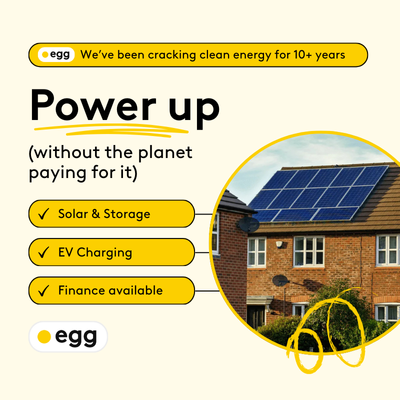What is the best strategy for operating a very oversized heat pump?
Posted by: @arundalepYou could use Home Assistant with a cheap wifi or Zigbee switch and essentially make whatever rules or conditions for the target temperature you want (This is how I control an oversized Samsung).
Posted by: @irmartiniIdeally if I could I would like thermostatic control within these windows as well, but the thermostat I use to control the on off periods does have programable hysteresis
I would probably set off @ 21.0 on @ 18.5 this would deal with solar gain as well as short weather fluctuations rather than me knocking an hour or two off or on to cope, if anyone knows of a thermostat with programable hysteresis like this I'm all ears.
True, but the average householder isnt going to do this.
Posted by: @editorBut really, this whole conversation shouldn’t even be happening. The fact that so many people are having to come up with workarounds to make their oversized heat pumps behave just proves that installers are still getting the basics wrong.
Indeed so.
Does it even need to happen though? Those who have responded want to 'take control', but does this actually save anything over just leaving the heat pump to do its thing. Heat pumps can, after all, deal with being oversized but the enthusiasts on this forum presumably believe they can do better than the heat pump designer. Are they right, or are they wrong. Given the state of the industry we really need to know!
Any answers from anybody? I certainly dont know!
4kW peak of solar PV since 2011; EV and a 1930s house which has been partially renovated to improve its efficiency. 7kW Vaillant heat pump.
@editor This isn't just about poor design and installation; it's also about the products used. The fact that some heat pumps can have a modulation range between 1.5 - 8 kW, and others with the same nameplate capacity only modulate between 4-8 kW is a problem. These specs are rarely published but are key to designing a system that is the most efficient for a given situation. The problem is that it is only by installing and monitoring the behaviour of different heat pumps (learning the hard/expensive way) that we will know which operates better at these low-load conditions in the real world.
Heat pump manufacturers have also economised with their product range by creating software-limited models, exasperating the problems further by narrowing the window of efficient operation, especially at lower compressor frequencies.
It would be impossible to achieve without mandating manufacturers to provide this data, along with the system volumes required to achieve them, but maybe MCS design criteria should also include low-load conditions in a bid to encourage manufacturers to work a bit harder in this area.
1970’s 3 bed detached house in West Sussex. Mains gas disconnected September 2023.
Samsung HTQ 8kW heat pump using mostly existing radiators. House is warm 24/7 (normally between 20.3-20.6 C but currently with a newborn its 21-21.2 C).
Sunamp for hot water storage.
Solaredge 6kWp PV and 10kWh battery
Vehicle 2 Grid charger (used with a Leaf)
Wallbox EV charger (installed for Octopus Intelligent).
Home Assistant used for HEMS with lots of custom ESP devices to allow integration.
Insulation upgrades:
EPS cavity wall insulation.
Improved loft insulation (renewed and 300mm where possible).
Posted by: @arundalepThe fact that some heat pumps can have a modulation range between 1.5 - 8 kW,
Thats an interesting one - as a matter of fact which (is it the Ecodan twin compressor model?)
Posted by: @arundalepHeat pump manufacturers have also economised with their product range by creating software-limited models, exasperating the problems further by narrowing the window of efficient operation, especially at lower compressor frequencies.
Indeed, loads of 'models' but in fact only one or two!
4kW peak of solar PV since 2011; EV and a 1930s house which has been partially renovated to improve its efficiency. 7kW Vaillant heat pump.
Exactly this! There is a lot of talk about this, but very little hard evidence either way.
Posted by: @jamespaAre they right, or are they wrong. Given the state of the industry we really need to know!
Any answers from anybody? I certainly dont know!
I use Home Assistant to provide a "Thermostat" signal to my Samsung heat pump; it wasn't required, but it has allowed me a lot of control to take advantage of TOU tariffs, solar generation, weather forecasting, integration with Tado etc, which wouldn't otherwise be available out of the box.
Posted by: @jamespathe enthusiasts on this forum presumably believe they can do better than the heat pump designer
Yes, I believe so, 🤣 . Definitely, in the case of Samsung, who I give credit for using PWM circulation pump control, but it could have been so much better, as I have demonstrated.
I believe systems should be hydraulically, as simple as possible, with the greatest active volume possible for the application and with the least amount of external influence, controls etc.
However, I would say system controls, in general, have massive room for improvement, and many existing controllers and installations could benefit from bespoke geekery to mitigate some of the controller design limitations to allow greater efficiencies, reliability and running costs.
1970’s 3 bed detached house in West Sussex. Mains gas disconnected September 2023.
Samsung HTQ 8kW heat pump using mostly existing radiators. House is warm 24/7 (normally between 20.3-20.6 C but currently with a newborn its 21-21.2 C).
Sunamp for hot water storage.
Solaredge 6kWp PV and 10kWh battery
Vehicle 2 Grid charger (used with a Leaf)
Wallbox EV charger (installed for Octopus Intelligent).
Home Assistant used for HEMS with lots of custom ESP devices to allow integration.
Insulation upgrades:
EPS cavity wall insulation.
Improved loft insulation (renewed and 300mm where possible).
Posted by: @arundalepHowever, I would say system controls, in general, have massive room for improvement, and many existing controllers and installations could benefit from bespoke geekery to mitigate some of the controller design limitations to allow greater efficiencies, reliability and running costs.
Oh definitely. Getting the WC curve optimised is a key part of the commissioning which, realistically, installers cant be expected to do because it needs to be done over a period of several days when its cold. So far as I can gather most just set it well above the optimum, invoke a thermostat/temperature sensor to compensate, and then instruct the householder to not to touch anything. I can understand why installers do this, expecting a typical householder to deal with the typical 4 point WC setting is unrealistic and so is coming back every day for a fortnight, but it leaves us in a situation where by default systems are sub optimal, possibly by a significant amount.
Added to this many (not all) heat pumps have limited (or no) ability to schedule setbacks or set forwards by varying the WC curve, leaving no option but to abandon setback/set forward altogether (which in many cases is the best option) or to use an on/off approach. Some heat pump manufacturers have worked out how to present setback/forward by altering the WC curve in a way that the ordinary householder can understand; this should be universal. Homely of course addresses that, but why cant the heat pump manufacturers.
4kW peak of solar PV since 2011; EV and a 1930s house which has been partially renovated to improve its efficiency. 7kW Vaillant heat pump.
@jamespa Homely does address many of these issues, but unfortunately, because of how it operates, it removes a lot of the flexibility options (Dynamic TOU tariffs like Octopus Intelligent, for example).
I would still recommend Homely in 99% of use cases.
1970’s 3 bed detached house in West Sussex. Mains gas disconnected September 2023.
Samsung HTQ 8kW heat pump using mostly existing radiators. House is warm 24/7 (normally between 20.3-20.6 C but currently with a newborn its 21-21.2 C).
Sunamp for hot water storage.
Solaredge 6kWp PV and 10kWh battery
Vehicle 2 Grid charger (used with a Leaf)
Wallbox EV charger (installed for Octopus Intelligent).
Home Assistant used for HEMS with lots of custom ESP devices to allow integration.
Insulation upgrades:
EPS cavity wall insulation.
Improved loft insulation (renewed and 300mm where possible).
My UFH manifolds are all locked open and I use weather compensation.
I use a programmable thermostat to help nudge the heating on or off. The heating is always on but I vary the temp by a couple of degrees here and there. This allows me to steer the pump towards being on at the cheap tariff times and off at the expensive tariff times and allows for a setback through the night. If done thoughtfully this will also help reduce cycling.
On the Samsung there are also settings for heatpump min and max operating time (code3025 and 3026) which can be used to limit cycling by brute force.
No heat exchanger, low loss header, buffer cylinder should be fitted as this makes cycling more likely. Volumiser might be helpful though.
If a heatpump is massively oversized it should really be replaced, even with a much cheaper model if economics dictate.
My tuppenceworth 🙂
One thought is that the advantage of an oversized system is that the radiators are hopefully also oversized, so you can run it at a lower temperature. If you’re in need of seeing the positive.
Mine is mildly oversized, vaillant 5kw for a 2.5 to 3 kw heat loss. It means the system can run at a much lower temperature than the specified 45c, closer to 35c at design temp.
Of course actually getting it right would be even better.
Posted by: @jamespaAs the title really. There are at least three live threads currently where its obvious that a part of the problem is a heat pump oversized by a factor of 2 or more, and I would guess that a fairly significant proportion of the threads have this somewhere at their centre. As we get into the shoulder season, the 'problem' will rear its head more frequently.
So whats the best strategy and why? Im assuming that the heat pump is operated on weather compensation obviously
1. Operate on WC and leave it open loop (no external controls). Trust the heat pump controller do its job
2. Operate on WC and batch heat by timed operation, accepting the variation in IAT. Adjust the number of on/off cycles according to the thermal time constant of the house
3. Operate on WC and modulate on and off using a thermostat
4. Something else
All are in fact cycling, so all will suffer the thermodynamic/COP penalty of cycling, perhaps to a greater or lesser extent depending on the resulting flow temperatures.
What's the best strategy and why? Any answers?
I think we are currently operating a weird mix of 2 and 3, but such are the parameters of the system, permitting it to turn on once an hour is actually enough. In cold weather such as -5 it will be on for 45 mins out of the hour and there is enough heat left in the radiators and (rather low) thermal mass of the house and contents to mean there are no real ups and downs like I used to have in my flat with a gas boiler.
So my idea is that we need a way of increasing the thermal mass of the house easily so that the big heat pump can run for longer but then turn off for longer because it has pumped more heat into something in the house which then releases it slowly. It could for instance be possible to add one of these thermal mass water heating things to the system and isolate the heat pump but keep water flowing through it and the radiators.
Carefully set up you could run the heat pump at efficient level for a while but then turn it off for an hour or two before it needed to come back on again.
- 23 Forums
- 2,098 Topics
- 46.2 K Posts
- 311 Online
- 3,385 Members
Latest Posts
-

RE: Ecodan consuming 100kwh per day in new build!!!
@anca1808 I have just reviewed the whole thread. In s...
By JamesPa , 1 hour ago
-

RE: Heating coming on when not required
I played with a max heating temp but there is a world o...
By JamesPa , 12 hours ago
-

RE: Pressure drop Primary circuit
I've always regarded topping up heating systems as my j...
By JamesPa , 12 hours ago
-

RE: Heat pump solutions and/or installer recommendations for France
I’d travel to France for work if you were struggling wi...
By Damon Blakemore , 19 hours ago
-

RE: 5 Star Service from Havenwise
That's always a danger with any new good idea, @morgan....
By Majordennisbloodnok , 1 day ago
-

Have your say in the Renewable Heating Hub Awards
It’s time to celebrate the best (and call out the worst...
By Mars , 1 day ago
-

-

RE: Mitsubishi cycling while on chilled water output
@iaack yes there's no denying that cold air sinks! I s...
By downfield , 2 days ago
-

RE: Weather compensated secondary circuits with Biomass
@andycoo that flooring sounds ideal. Extra volume is ...
By Sune , 2 days ago
-

If you are thinking of heating on the immersion conside...
By JamesPa , 3 days ago
-

RE: Surface mount or bury primaries for heat pump installation?
@tomasmcguinness, I think your best bet would be using ...
By Aventus Eco , 3 days ago
-

RE: Solar Power Output – Let’s Compare Generation Figures
@toodles all depends on asking the right questions! And...
By Tim441 , 4 days ago
-

RE: Commencing on an ASHP Installation Process
I received confirmation this morning that my Greener Ho...
By Sheriff Fatman , 4 days ago
-

@jamespa Thanks for the advice - very helpful. I had al...
By abam48 , 5 days ago




